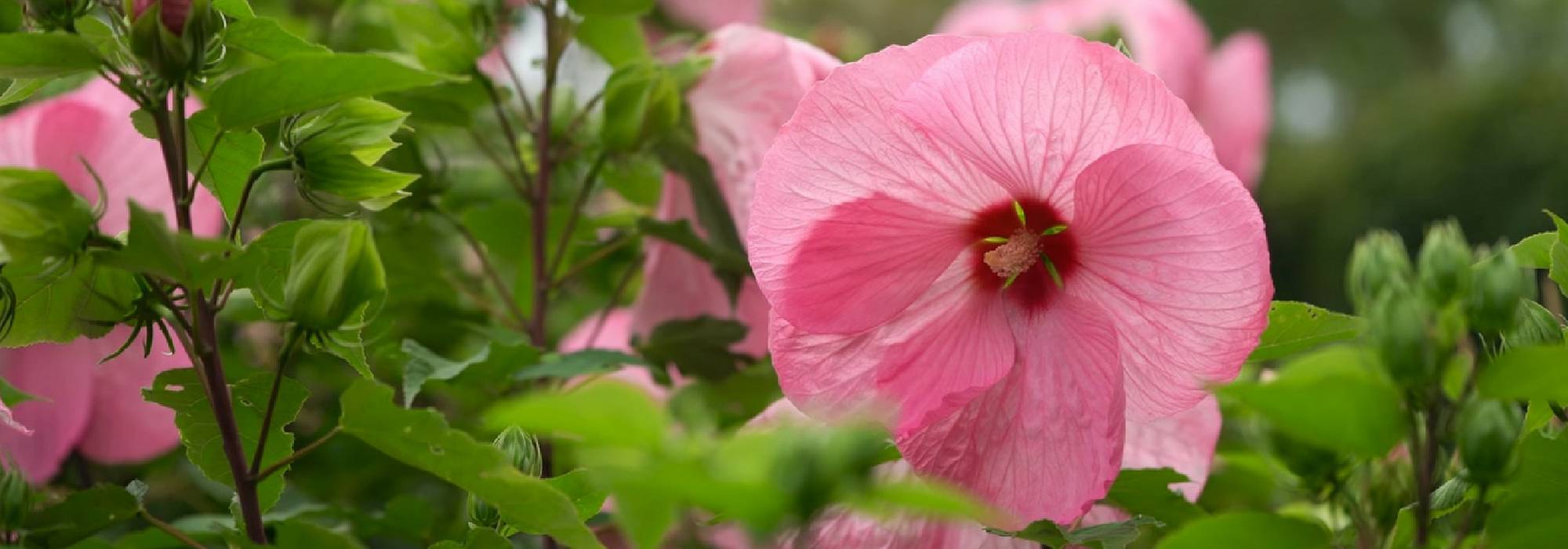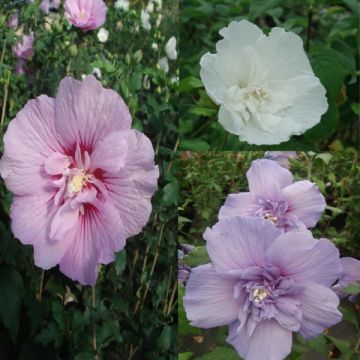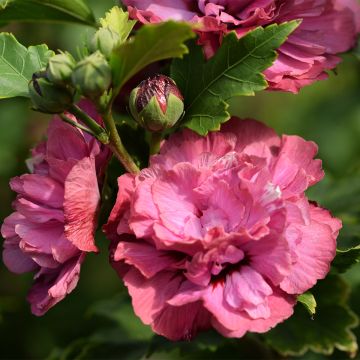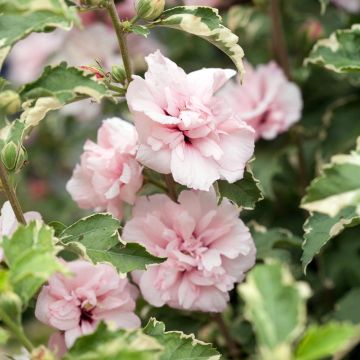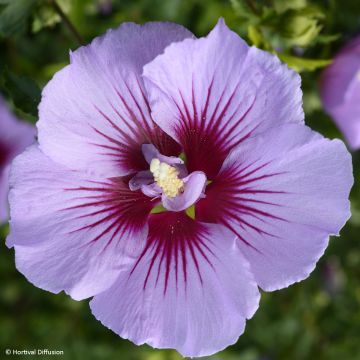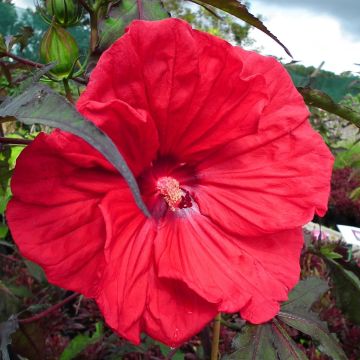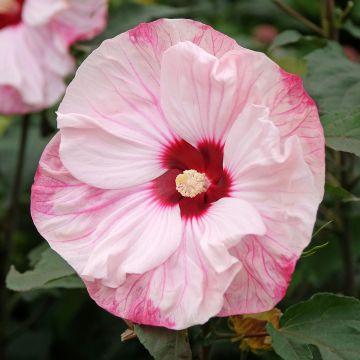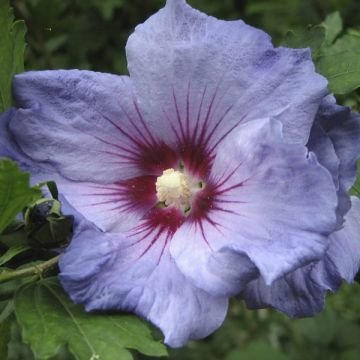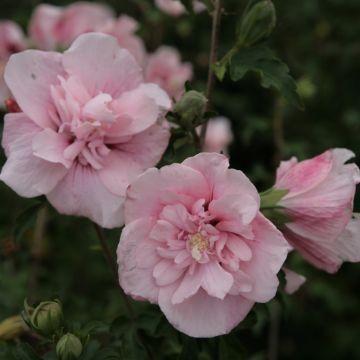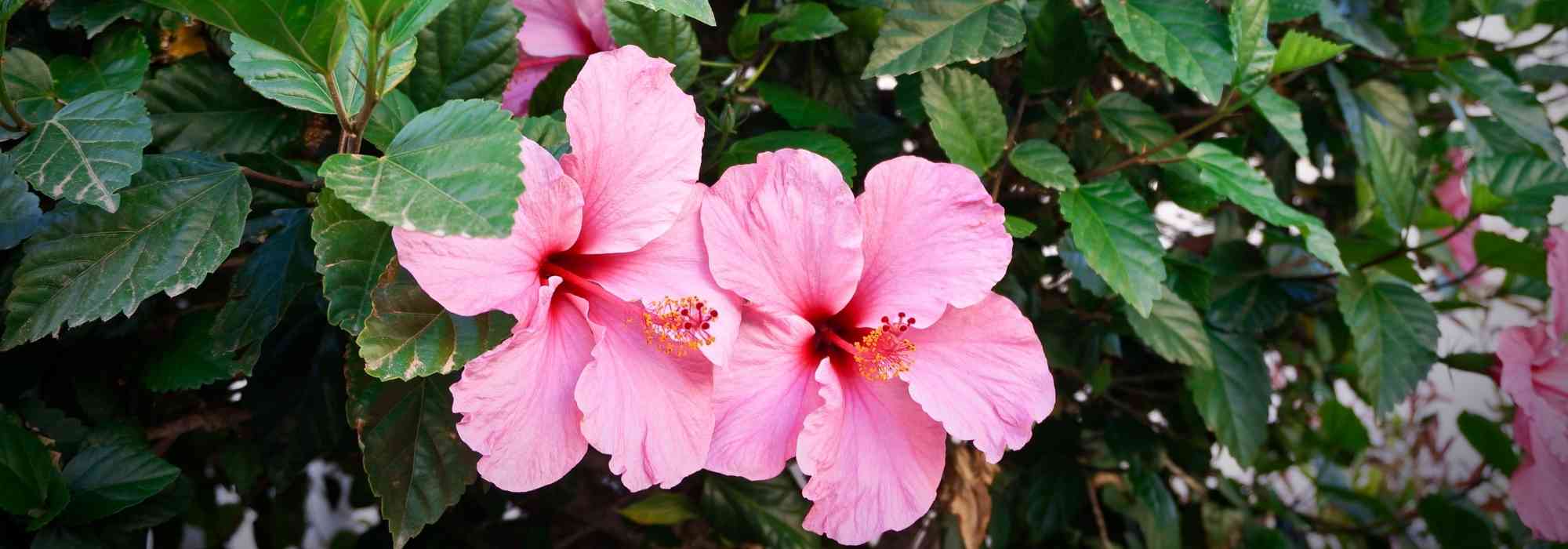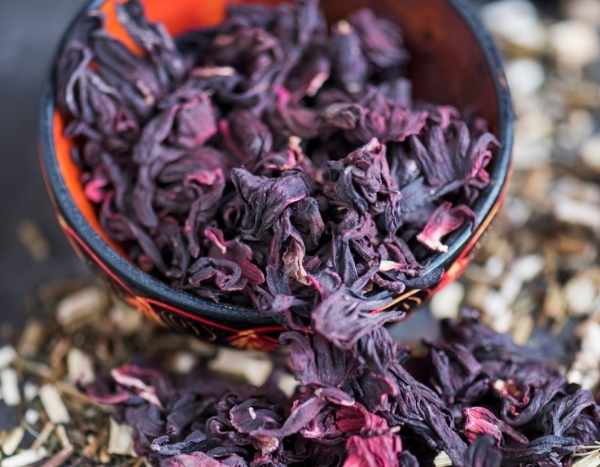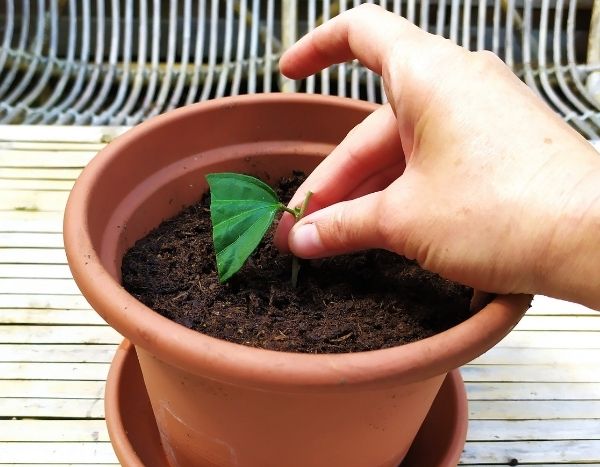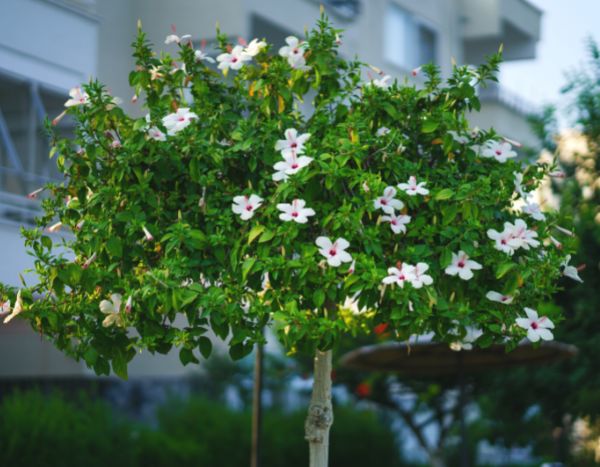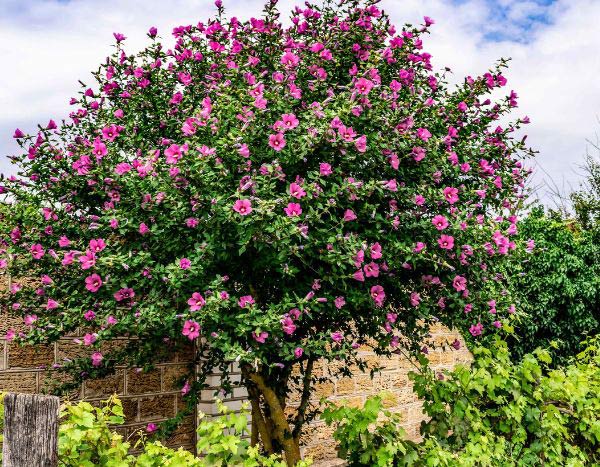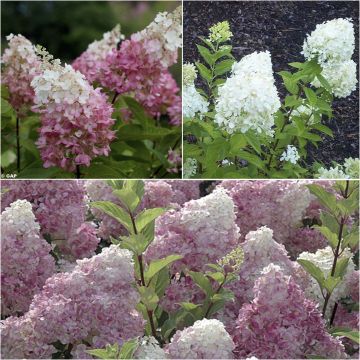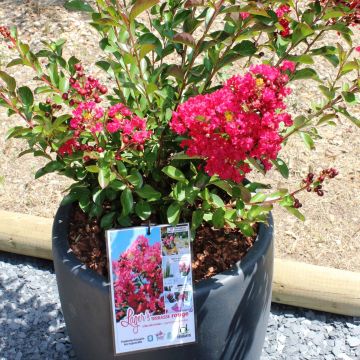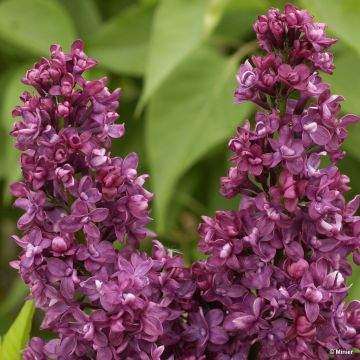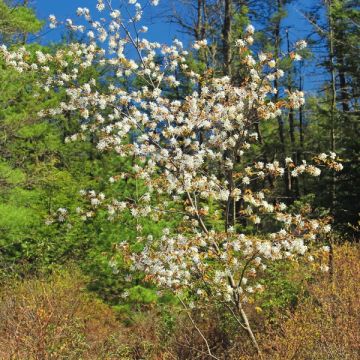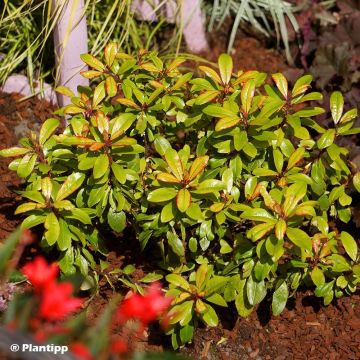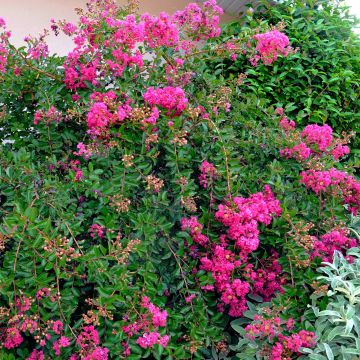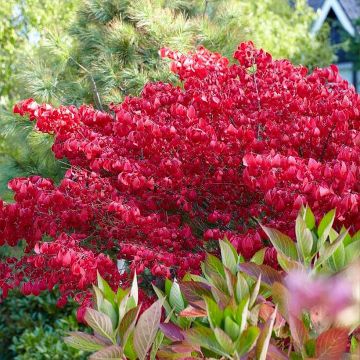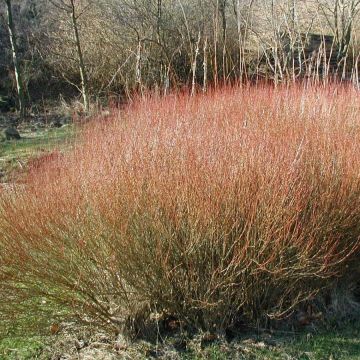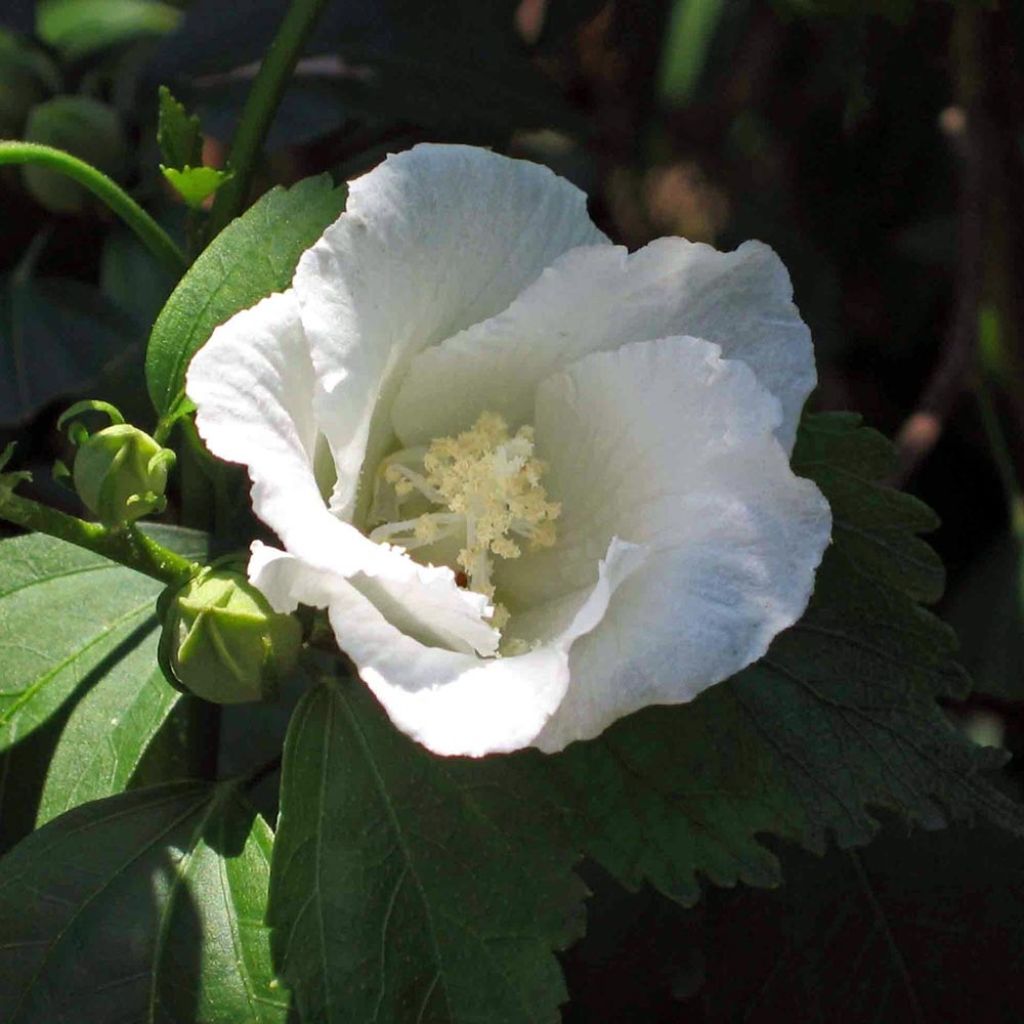

Hibiscus syriacus Diana - Rose of Sharon
Hibiscus syriacus Diana - Rose of Sharon
Hibiscus syriacus Diana
Common Hibiscus, Rose of Sharon, Syrian ketmia, St Joseph's rod, Garden Hibiscus
Special offer!
Receive a €20 voucher for any order over €90 (excluding delivery costs, credit notes, and plastic-free options)!
1- Add your favorite plants to your cart.
2- Once you have reached €90, confirm your order (you can even choose the delivery date!).
3- As soon as your order is shipped, you will receive an email containing your voucher code, valid for 3 months (90 days).
Your voucher is unique and can only be used once, for any order with a minimum value of €20, excluding delivery costs.
Can be combined with other current offers, non-divisible and non-refundable.
Home or relay delivery (depending on size and destination)
Schedule delivery date,
and select date in basket
This plant carries a 24 months recovery warranty
More information
We guarantee the quality of our plants for a full growing cycle, and will replace at our expense any plant that fails to recover under normal climatic and planting conditions.
Does this plant fit my garden?
Set up your Plantfit profile →
Description
The Hibiscus syriacus 'Diana' is a highly prolific variety of althaea, which is commonly planted in gardens due to its good vigour. This bush has an upright habit, which can be a bit stiff in the early years. It offers simple yet brightly coloured flowers with slightly undulated white petals. Although short-lived, new flowers are constantly formed from the second half of summer until early autumn. This hardy bush is easy to grow in ordinary soil and prefers sunny locations. It is perfect for a flowering hedge, a flower bed, or a large container near the house.
The Hibiscus syriacus, also known as Rose of Sharon or Tree Mallow, is a tough deciduous shrub that can thrive in our climate. However, in warmer temperatures, it can remain evergreen. This shrub belongs to the Malvaceae family, including hollyhocks and marshmallows. It is originally from the temperate regions of Asia and has produced many cultivars. One of the most notable is the 'Diana' variety, distinguished by its robust and upright growth and abundant blooming period from August to October.
This is a relatively slow-growing bush, reaching a height of about 2.20 m (7 ft 2 in) and a spread of 1.50 m, supported by an upright branching. It offers simple corollas, 5 to 12 cm (2 to 4.7 in) wide, in pure white colours, surrounding a large central column of fused white stamens. After the flowers, numerous fruits appear, which can be regularly removed to promote new flowering. Its foliage forms a beautiful dark green backdrop, slightly glossy. The leaves are alternate, lobed, ovate to lanceolate, with serrated and billowy edges measuring about 10 cm (3.9 in) long. The foliage appears late in spring and falls in November.
The Rose of Sharon has the advantage of flowering abundantly at a time when few shrubs are in bloom in the garden, in almost all types of soil and in all climates. 'Diana' Althaea likes bright, warm locations, and can tolerate light shade in warmer temperatures. This Hibiscus requires little maintenance and grows slowly but steadily. Plant it in a sheltered spot from strong winds, in a soil that remains slightly moist until the end of summer. This excellent variety can be used as a 2 m (6 ft 7 in) hedge, in combination with other hibiscus of different colours, buddleias, abelias, as a standalone plant or at the back of a perennial flower bed composed of asters, phlox, daylilies, gauras, or shrubby lavateras.
In regions with cool and rainy summers, it is best to choose single-flowered hibiscus varieties as they bloom better in cooler temperatures than double-flowered ones.
Hibiscus syriacus Diana - Rose of Sharon in pictures
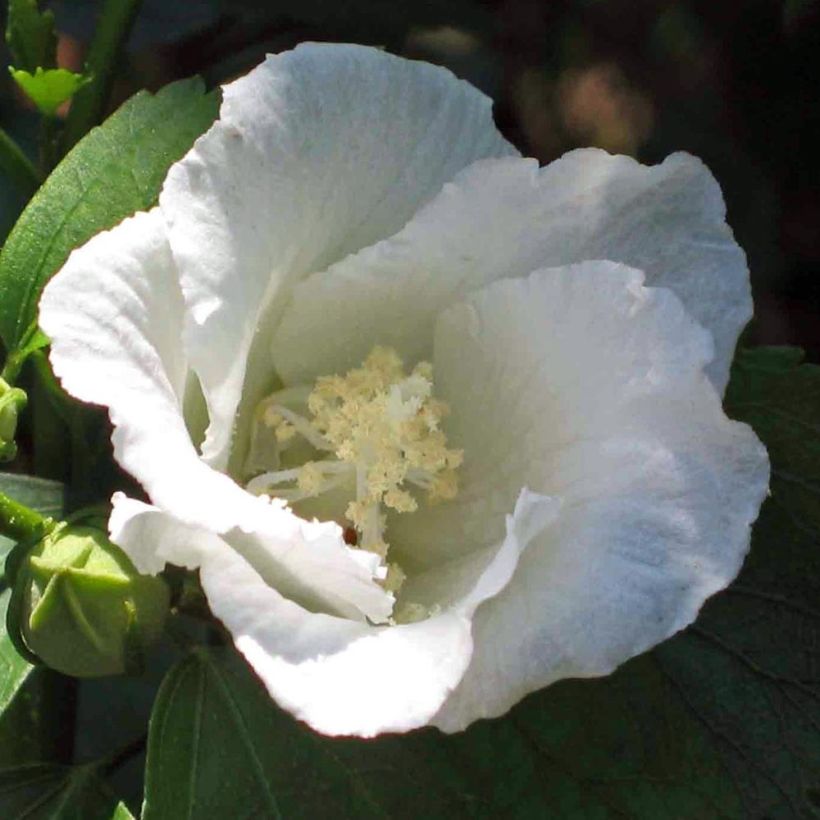

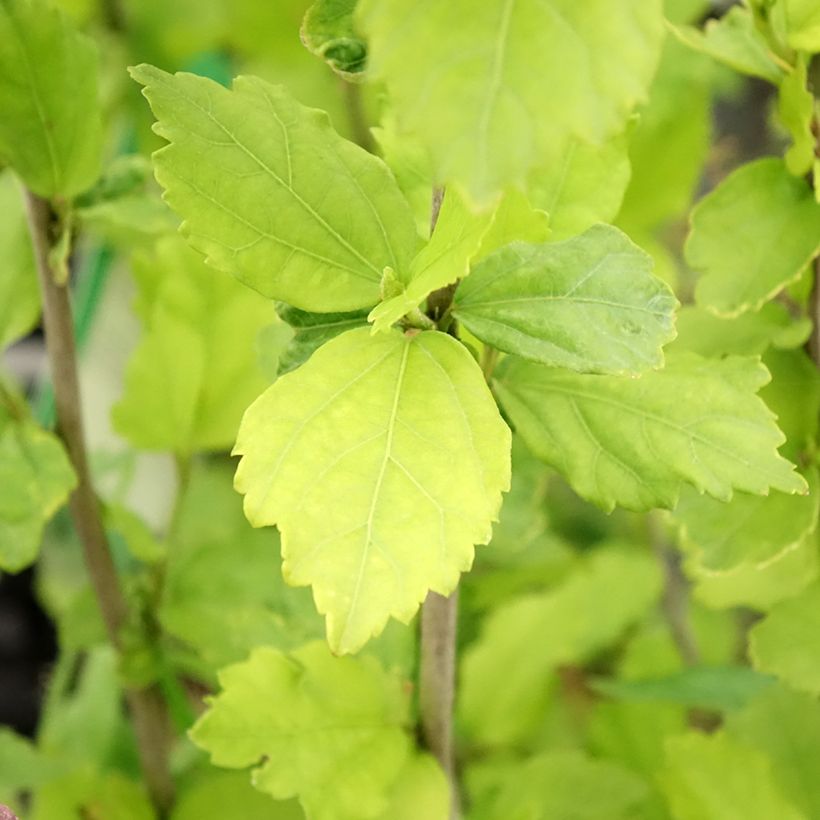

Plant habit
Flowering
Foliage
Botanical data
Hibiscus
syriacus
Diana
Malvaceae
Common Hibiscus, Rose of Sharon, Syrian ketmia, St Joseph's rod, Garden Hibiscus
Cultivar or hybrid
Other Hibiscus
View all →Planting and care
To plant the Hibiscus syriacus Diana, choose either spring or autumn and find a location with plenty of sunlight. If you live in a warmer area, partial shade can be used. The soil should be well-drained, deep, loose, and fertile. If the soil needs improvement, add garden soil, compost, and sand to the planting hole. After planting, water generously. Do not be concerned if the vegetation does not form before May, as this is typical for this plant. At maturity, it can withstand temperatures as low as -20°C (-4 °F) and grow in almost all regions except mountainous areas or very cold winter regions. If you want your shrubby hibiscus to thrive, ensure it can handle heat and occasional dry soil. However, the bushes are more vibrant and floriferous when grown in soil that retains moisture during the summer. If necessary, mulch the base of the plant and water it.
Planting period
Intended location
Care
Planting & care advice
This item has not been reviewed yet - be the first to leave a review about it.
Similar products
Haven't found what you were looking for?
Hardiness is the lowest winter temperature a plant can endure without suffering serious damage or even dying. However, hardiness is affected by location (a sheltered area, such as a patio), protection (winter cover) and soil type (hardiness is improved by well-drained soil).

Photo Sharing Terms & Conditions
In order to encourage gardeners to interact and share their experiences, Promesse de fleurs offers various media enabling content to be uploaded onto its Site - in particular via the ‘Photo sharing’ module.
The User agrees to refrain from:
- Posting any content that is illegal, prejudicial, insulting, racist, inciteful to hatred, revisionist, contrary to public decency, that infringes on privacy or on the privacy rights of third parties, in particular the publicity rights of persons and goods, intellectual property rights, or the right to privacy.
- Submitting content on behalf of a third party;
- Impersonate the identity of a third party and/or publish any personal information about a third party;
In general, the User undertakes to refrain from any unethical behaviour.
All Content (in particular text, comments, files, images, photos, videos, creative works, etc.), which may be subject to property or intellectual property rights, image or other private rights, shall remain the property of the User, subject to the limited rights granted by the terms of the licence granted by Promesse de fleurs as stated below. Users are at liberty to publish or not to publish such Content on the Site, notably via the ‘Photo Sharing’ facility, and accept that this Content shall be made public and freely accessible, notably on the Internet.
Users further acknowledge, undertake to have ,and guarantee that they hold all necessary rights and permissions to publish such material on the Site, in particular with regard to the legislation in force pertaining to any privacy, property, intellectual property, image, or contractual rights, or rights of any other nature. By publishing such Content on the Site, Users acknowledge accepting full liability as publishers of the Content within the meaning of the law, and grant Promesse de fleurs, free of charge, an inclusive, worldwide licence for the said Content for the entire duration of its publication, including all reproduction, representation, up/downloading, displaying, performing, transmission, and storage rights.
Users also grant permission for their name to be linked to the Content and accept that this link may not always be made available.
By engaging in posting material, Users consent to their Content becoming automatically accessible on the Internet, in particular on other sites and/or blogs and/or web pages of the Promesse de fleurs site, including in particular social pages and the Promesse de fleurs catalogue.
Users may secure the removal of entrusted content free of charge by issuing a simple request via our contact form.
The flowering period indicated on our website applies to countries and regions located in USDA zone 8 (France, the United Kingdom, Ireland, the Netherlands, etc.)
It will vary according to where you live:
- In zones 9 to 10 (Italy, Spain, Greece, etc.), flowering will occur about 2 to 4 weeks earlier.
- In zones 6 to 7 (Germany, Poland, Slovenia, and lower mountainous regions), flowering will be delayed by 2 to 3 weeks.
- In zone 5 (Central Europe, Scandinavia), blooming will be delayed by 3 to 5 weeks.
In temperate climates, pruning of spring-flowering shrubs (forsythia, spireas, etc.) should be done just after flowering.
Pruning of summer-flowering shrubs (Indian Lilac, Perovskia, etc.) can be done in winter or spring.
In cold regions as well as with frost-sensitive plants, avoid pruning too early when severe frosts may still occur.
The planting period indicated on our website applies to countries and regions located in USDA zone 8 (France, United Kingdom, Ireland, Netherlands).
It will vary according to where you live:
- In Mediterranean zones (Marseille, Madrid, Milan, etc.), autumn and winter are the best planting periods.
- In continental zones (Strasbourg, Munich, Vienna, etc.), delay planting by 2 to 3 weeks in spring and bring it forward by 2 to 4 weeks in autumn.
- In mountainous regions (the Alps, Pyrenees, Carpathians, etc.), it is best to plant in late spring (May-June) or late summer (August-September).
The harvesting period indicated on our website applies to countries and regions in USDA zone 8 (France, England, Ireland, the Netherlands).
In colder areas (Scandinavia, Poland, Austria...) fruit and vegetable harvests are likely to be delayed by 3-4 weeks.
In warmer areas (Italy, Spain, Greece, etc.), harvesting will probably take place earlier, depending on weather conditions.
The sowing periods indicated on our website apply to countries and regions within USDA Zone 8 (France, UK, Ireland, Netherlands).
In colder areas (Scandinavia, Poland, Austria...), delay any outdoor sowing by 3-4 weeks, or sow under glass.
In warmer climes (Italy, Spain, Greece, etc.), bring outdoor sowing forward by a few weeks.






























